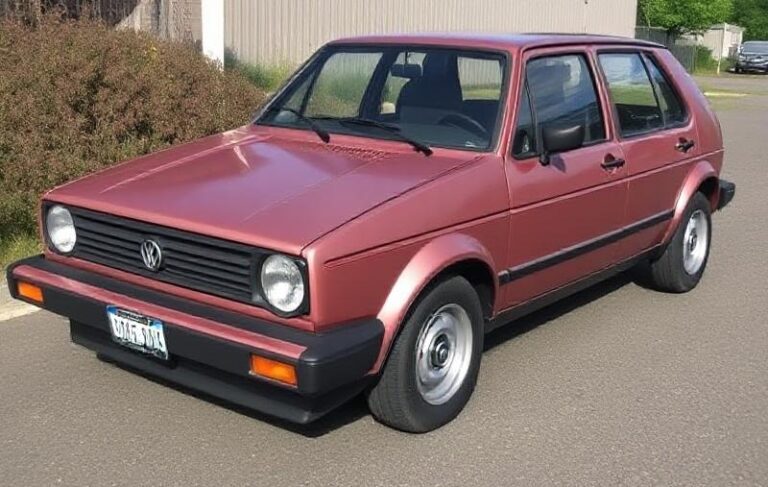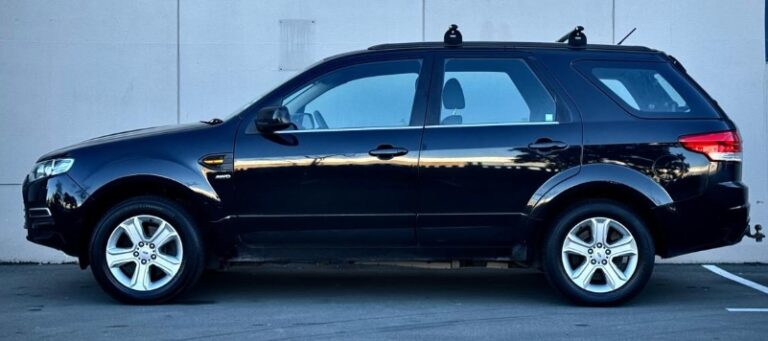The Evolution of the Alfa Romeo Arna: A Legendary Compact Car
The Alfa Romeo Arna, a fascinating model from the Italian automotive brand, represents a unique chapter in the history of compact cars. Produced from 1983 to 1987, the Arna serves as a key example of the collaboration between automotive stylists and designers, as well as an exploration of the evolution in engineering processes during the 1980s. This article will delve into the history of the Arna, exploring its production years, variations in trim levels, and the significance it holds in the timeline of Alfa Romeo.
Origins and Development
The Alfa Romeo Arna was born out of a collaboration between Alfa Romeo and Nissan, aimed at creating a compact car that could compete in the rapidly changing automotive market of the early 1980s. The partnership was notable as Alfa Romeo sought to expand its reach beyond traditional markets, while Nissan aimed to bolster its presence in the European segment.
The model was officially introduced at the 1983 Geneva Motor Show and went into production a few months later in 1984. The Arna was primarily manufactured at the Alfa Romeo plant in Pomigliano d’Arco near Naples, Italy, which was previously operated by the Fiat Group.
Design and Concept
The design of the Alfa Romeo Arna was characterized by its compact dimensions, angular styling, and hatchback configuration. It shared many components with the Nissan Cherry, particularly its chassis and engines, but incorporated distinctive Alfa elements meant to appeal to the brand’s enthusiasts. The Arna was positioned as a practical yet stylish family car, although it did inherit some of the criticisms that typically accompanied Nissan’s build quality during this period.
Models and Trim Levels
The Alfa Romeo Arna was available in several body styles and trim levels throughout its production run from 1983 to 1987. Below is a detailed overview of the various models and trims that graced the lineup:
- Base Model (1984-1987):
The entry-level model catered to those looking for a budget-friendly option. It was equipped with essential features and aimed at drivers who prioritized economy over luxury. Standard features typically included basic upholstery, steel wheels, and minimal chrome accents. - L (Lusso) (1984-1987):
The ‘L’ variant introduced additional comfort features, making it a more appealing choice for those seeking a balance between practicality and a bit of luxury. Enhanced upholstery, improved audio systems, and greater attention to interior details characterized the Lusso model. - Sport (1984-1987):
The Sport model appealed to enthusiasts seeking a more dynamic driving experience. This version often came with stiffer suspension for better handling and sportier styling elements like unique alloy wheels, side skirts, and more aggressive front and rear bumpers. The interior also featured sportier seats to enhance the driving experience. - Quadrifoglio (1984-1987):
The Quadrifoglio variant was designed for the performance-oriented market, featuring a more powerful engine and performance enhancements, including upgraded brakes and a sport-tuned suspension. It prioritized speed and agility, making it a unique offering in the Arna lineup. - Diesel Variant (1985-1987):
As the market began to see a rise in diesel demand, a diesel version of the Arna was introduced. It featured a 1.8-liter diesel engine that appealed to customers looking for improved fuel efficiency without compromising practicality. - Limited Editions (1986-1987):
Towards the tail end of the production run, Alfa Romeo released limited edition Arna models that featured specific upgrades, including special paint colors, unique wheel designs, and additional aesthetic enhancements aimed at collectors and enthusiasts.
Production Years and Volumes
The Alfa Romeo Arna was produced from 1983 until its discontinuation in 1987, when Alfa Romeo decided to refocus its efforts on models more representative of the brand’s traditional craftsmanship and sporting pedigree. Estimates suggest that around 60,000 units were produced during its brief history, making it a relatively rare model today.
.
THIS could come in handy for your auto garage (and everywhere else!).

.
Impact and Legacy
The Arna, despite its often mixed reception, holds an important place in automotive history. While it faced criticism for its design and manufacturing quality, it also made significant contributions regarding fuel efficiency and cost-effectiveness. As a collaboration product, it highlighted the change in automotive production and design philosophies throughout the 1980s.
The model’s journey may have been short-lived, but it paved the way for new approaches in design and engineering and opened up markets for future Alfa Romeo models. Collectors today consider the Arna a unique piece of Alfa Romeo lore and an interesting footnote in the narrative of compact cars.
Conclusion
Though the Alfa Romeo Arna did not achieve the level of acclaim of some of its contemporaries, it stands as a testament to the brand’s adaptability and innovation during the complex automotive landscape of the 1980s. Through its various models and trim levels, the Arna encapsulated a blend of Italian charm and practical engineering—a reflection of its era’s evolving automotive industry.
In retrospect, the Arna’s partnership with Nissan was a bold move that offered insights into the future of collaborative design and manufacturing. As Alfa Romeo continues to evolve, the Arna serves as a reminder of the brand’s dynamic history, showcasing how alliances can shape automobile development and consumer expectations in the ever-changing landscape of the automotive sector. Today, it remains a topic of interest among automotive historians, collectors, and enthusiasts who appreciate the innovation and complexities that define the history of carmaking.







